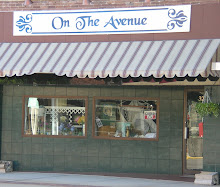After the heaviness, clutter and dark colors of Victorian interiors, people wanted something new and cheerful. Edwardian style was a breath of fresh air.
If you want the Edwardian look, here are some ideas:
• Furniture - Edwardian furniture would have been reproduction furniture to them so you can choose from a range of styles including baroque, rococo and empire. The wing chair is a typical shape. Choose upholstery in chintz, and damasks in pale colors.
• Wicker - bamboo and wicker furniture were also introduced in these period. You can still buy good quality wicker furniture today in a range of colors. If you find some in a junk shop and give it a new lease of life by spraying the paint on with a spray gun or aerosol. Don't brush it on as you'll clog up the weave.
• Floors - highly polished wood block floors, with oriental rugs, look fantastic in a living room. If you already have wooden floorboards, stain them with an oak-colored varnish. For areas with more wear and tear, go for bricks in a herringbone pattern or red quarry tiles.
• Wallpaper - choose wallpapers with a fresh, cheerful feel such as florals with roses, lilac, wisteria, and sweet peas, with trellises, ribbons and bows. Stripes are also typical - go for something simple but rich for dining rooms such as a gold damask and white, and candy stripes for bedrooms. It was considered too much to have both a dado rail and a frieze: most people papered up to the dado rail and then papered or painted the wall above that with plain paper or distemper.
• Lincrusta - put up some lincrusta - embossed wallpaper - introduced in 1877. It has an almost rubber-like texture and comes in beautiful art nouveau designs. It is still being made today. It can be painted any color although cream is probably best.
• Fireplaces - fireplaces are smaller than Victorian ones. They had splayed sides with projecting iron or copper hoods and decorative tiles. Smaller versions are usually found in the bedrooms.
• Color schemes - choose pastel color schemes in the colors of flowers - primrose yellows, leaf greens, the lilac of wisteria, and grey. Living rooms can take darker colors such as dark green for fabrics and cream walls.
• Lighting - electric lighting was just beginning to be introduced to the grander homes. Buy fabric lampshades in soft colors with frills and tassels. Use them on wall lights, table lights and even standard lamps. For a central light, look for a pendant fitting in smoked glass. Ceiling roses disguised the wiring for light fittings. Tiffany lamps or reclining female bronze figures are also in keeping.
• Windows - hang pieces of lace at the windows and then add plain or floral curtains to co-ordinate with the walls. Alternatively put up a simple striped roller blind.
• Cushions - take up embroidery and needlepoint and make some cushions with floral motifs in an art nouveau style.
• Pictures - hang pictures on hooks but place them halfway down the wall.
• Accessories - add Edwardian-style accessories such as early gramophones (the ones with the conical shells), tiered silver cake stands, and pretty silver photograph frames.
• Flowers - echo the wallpaper with your choice of flowers. Try loosely arranged bunches of sweet peas, roses, and lilac. House palms are also typically Edwardian.
Stop by and see us On The Avenue for more great ideas. We'd love to help with your new decorating project!



